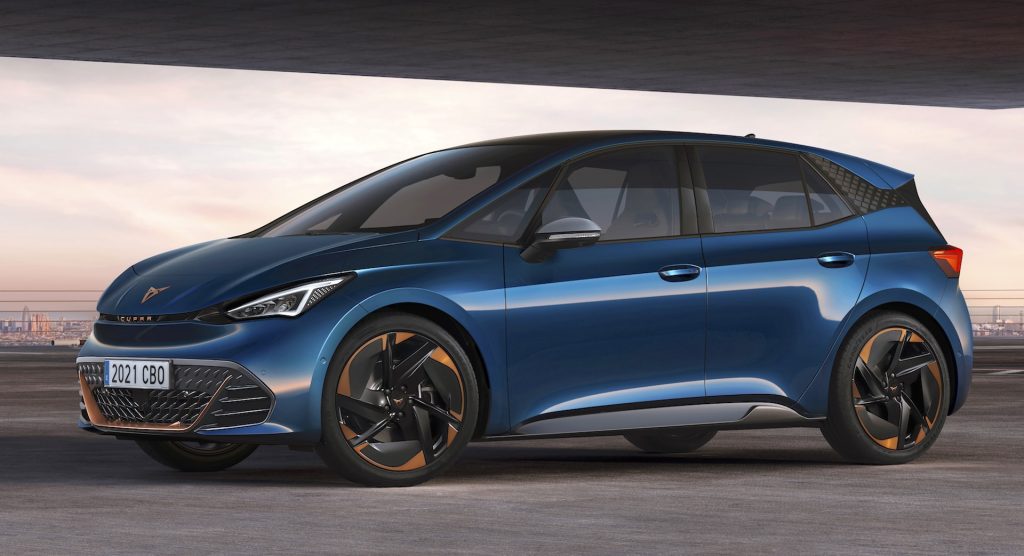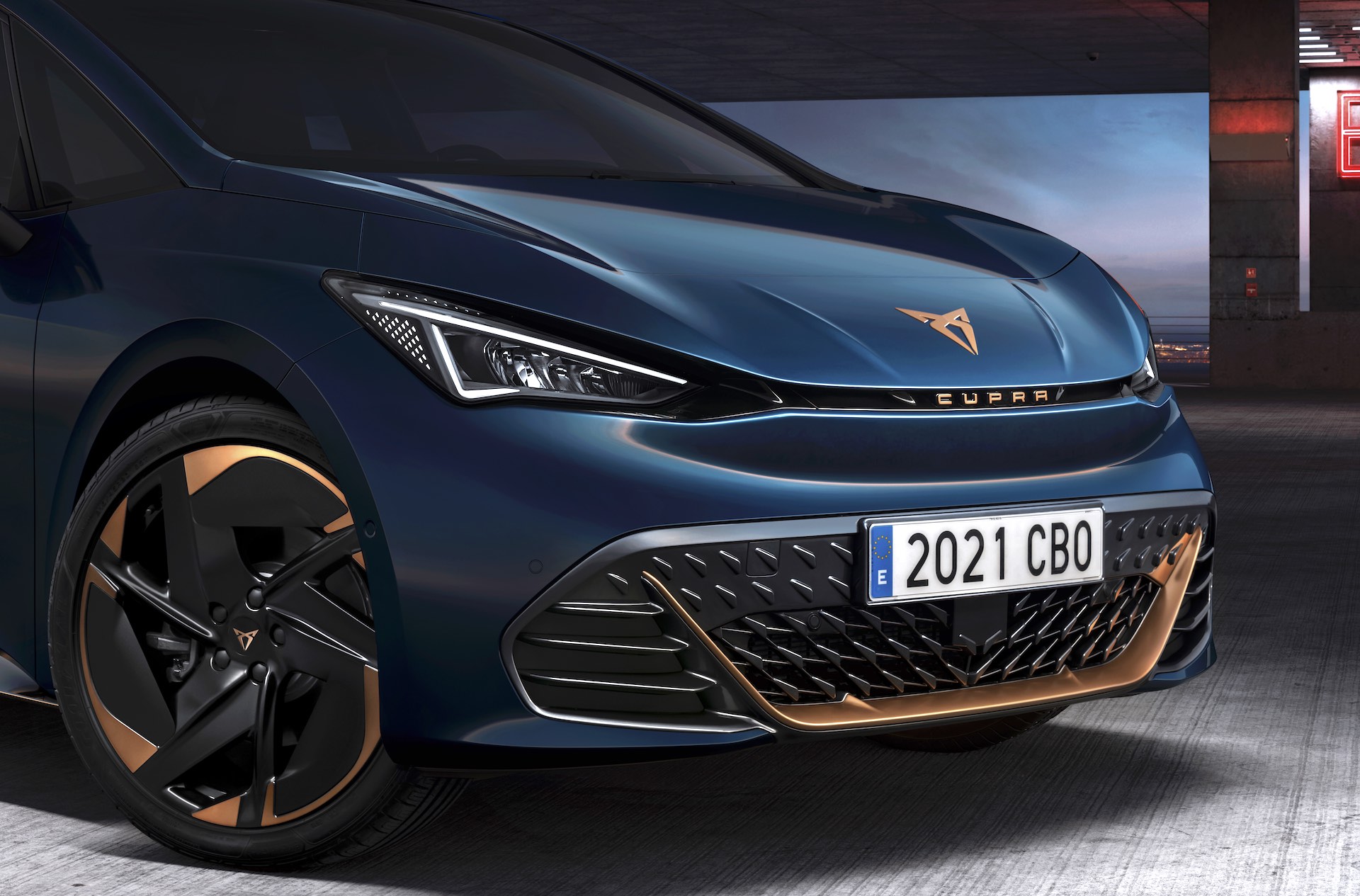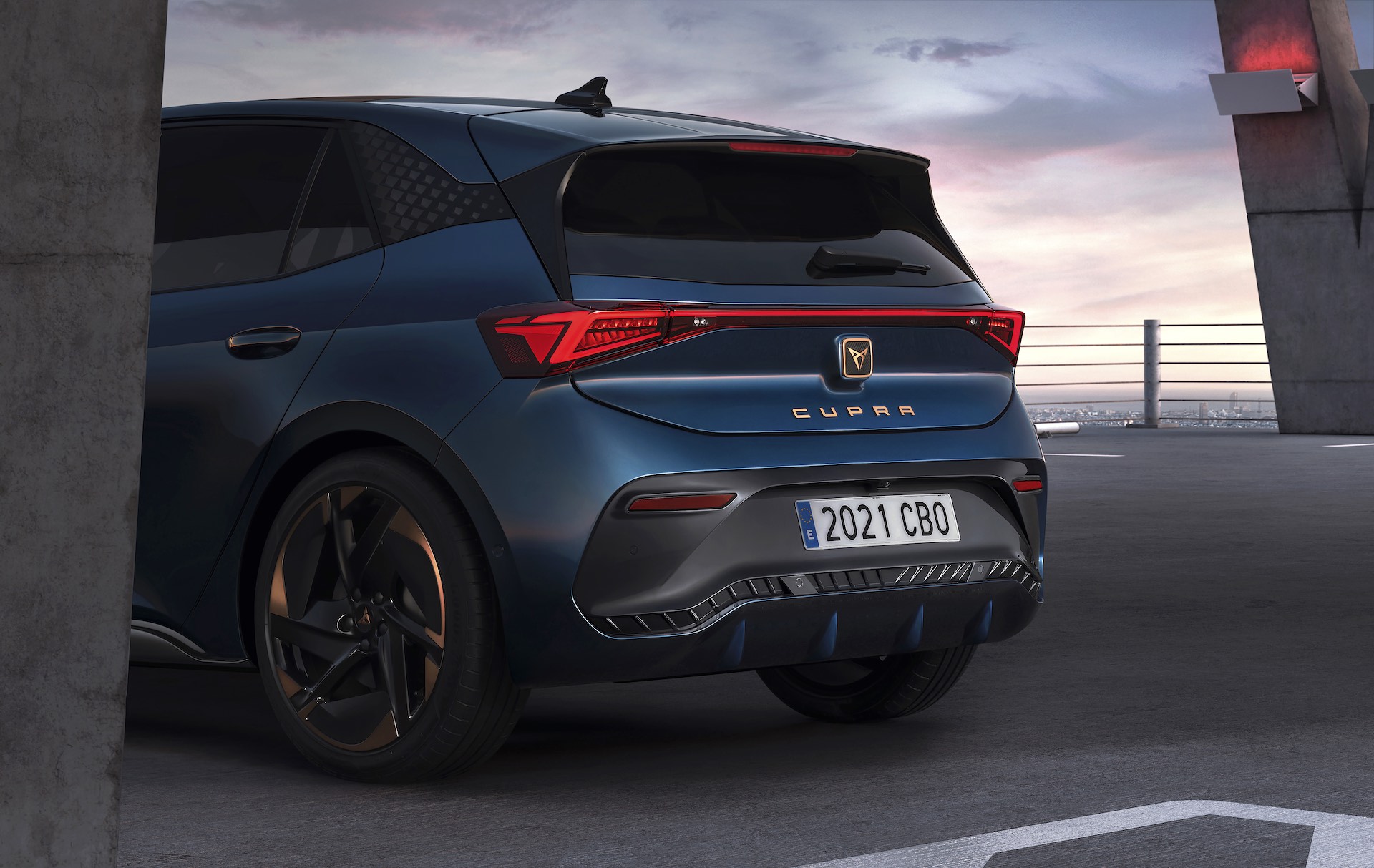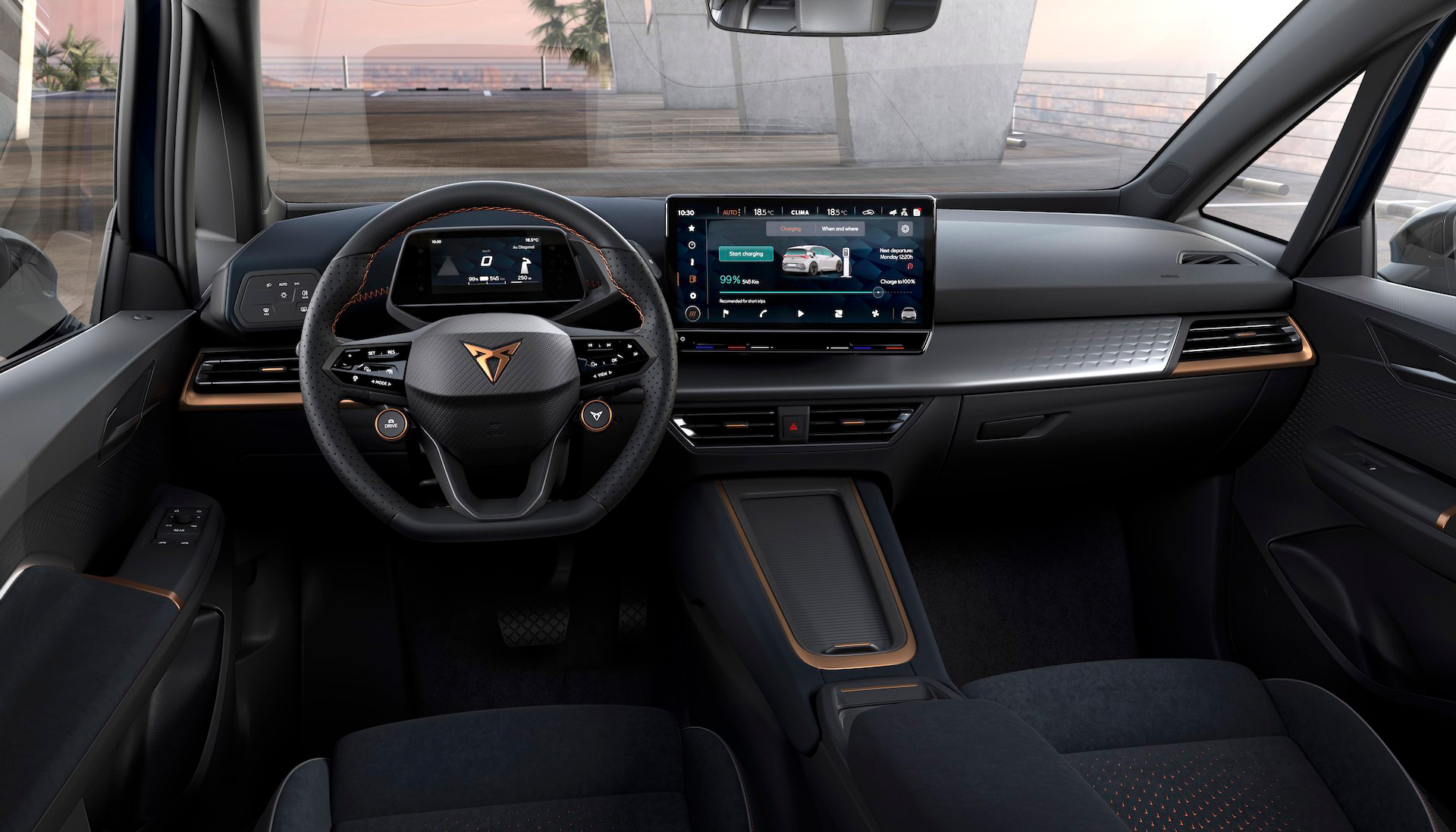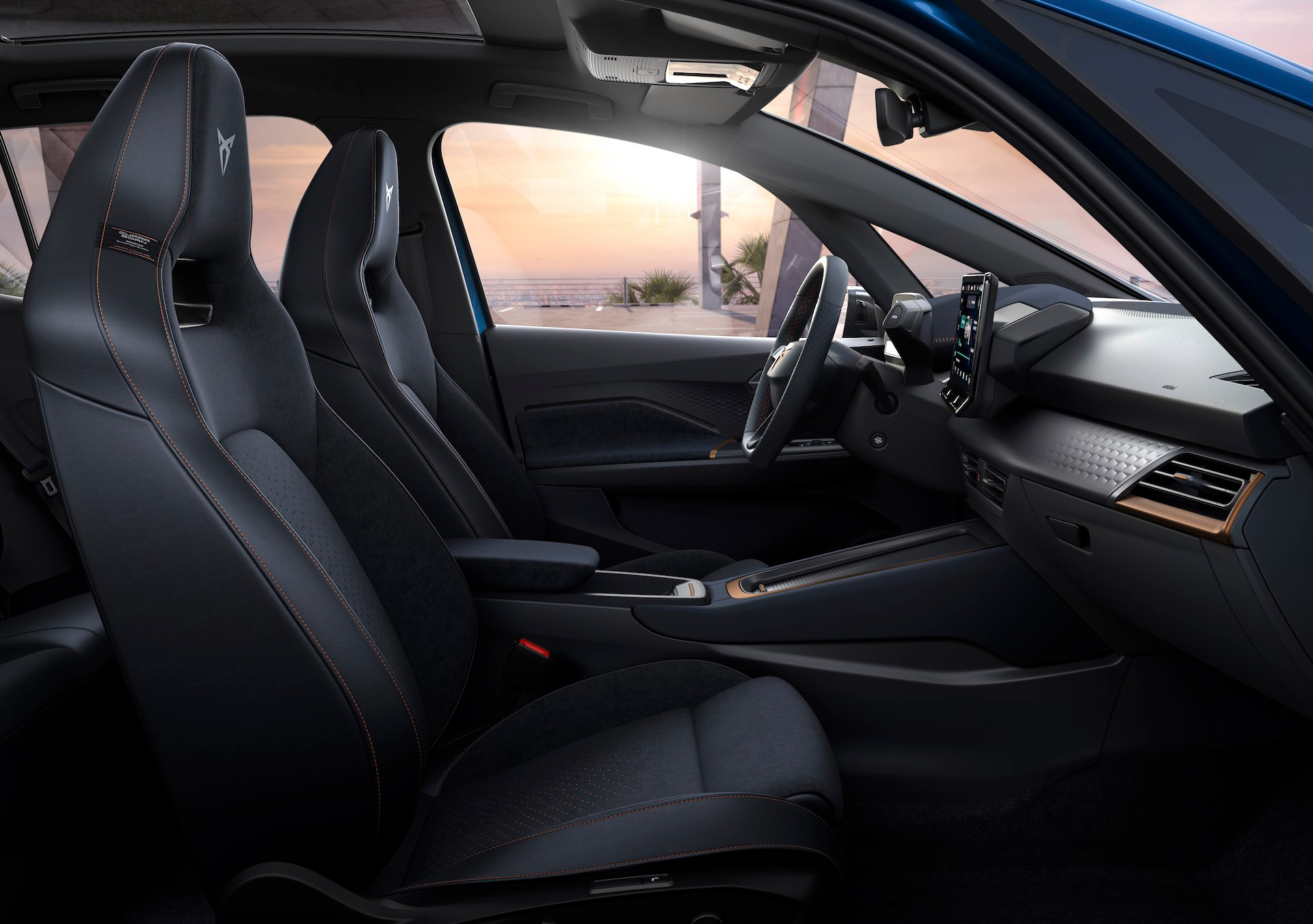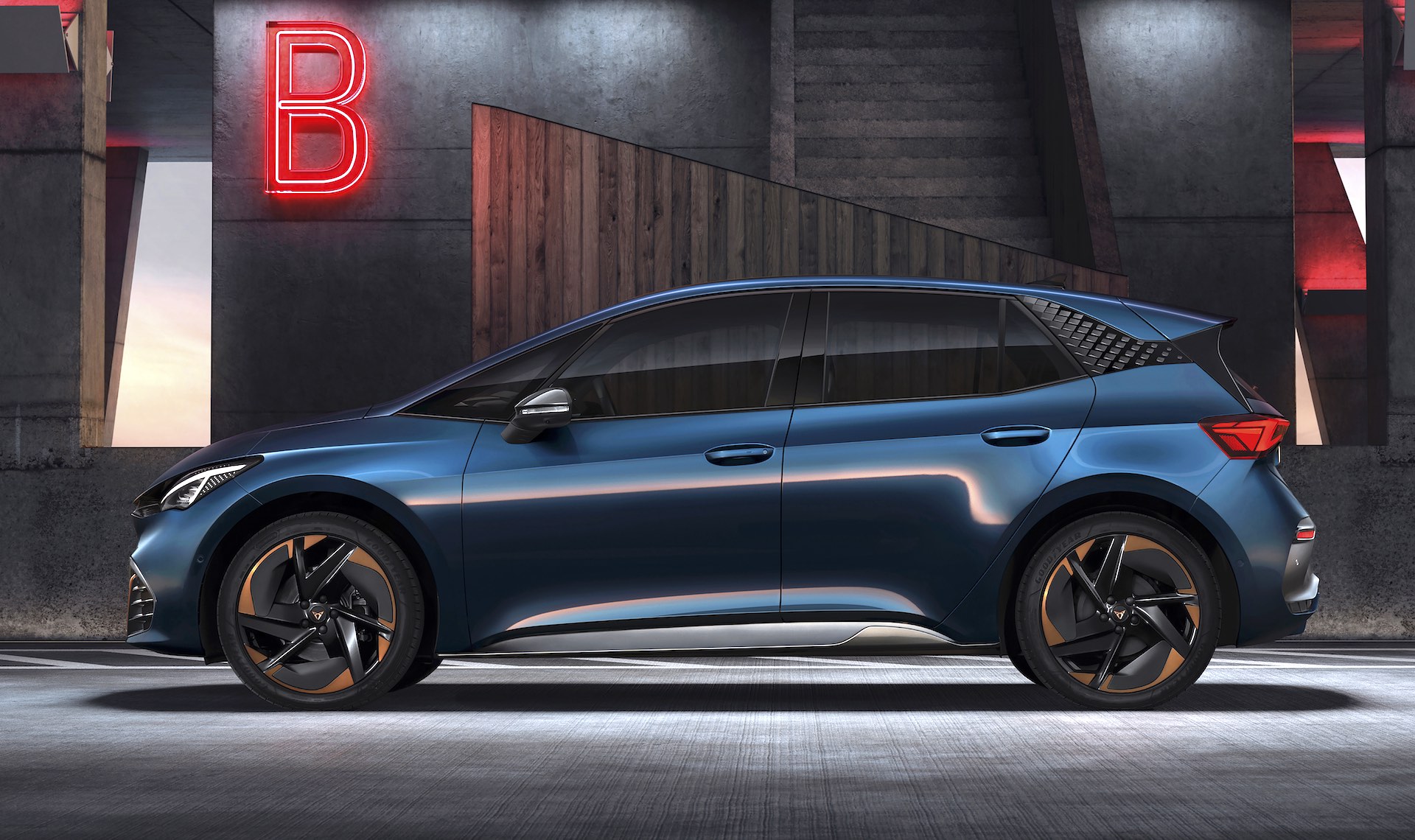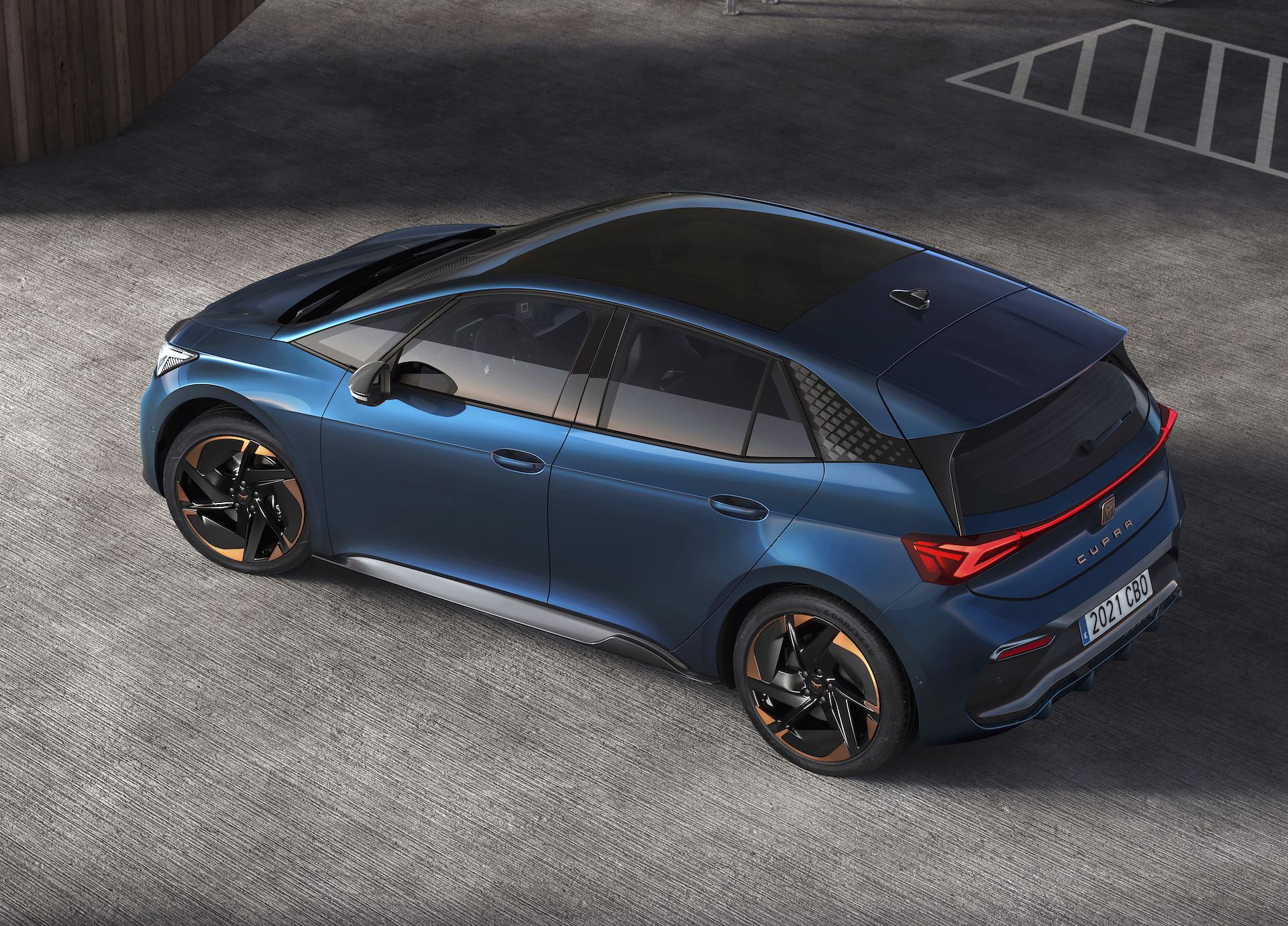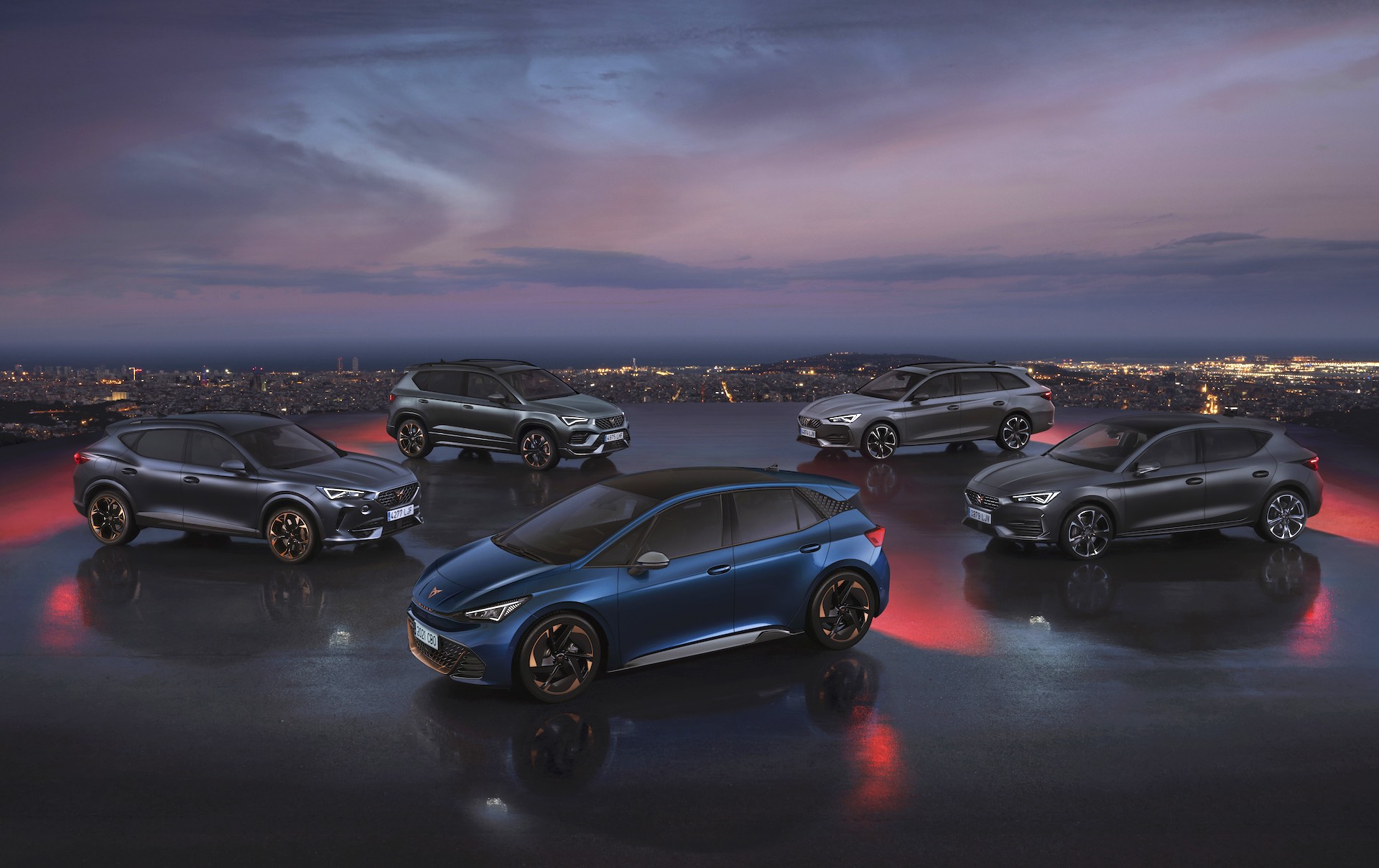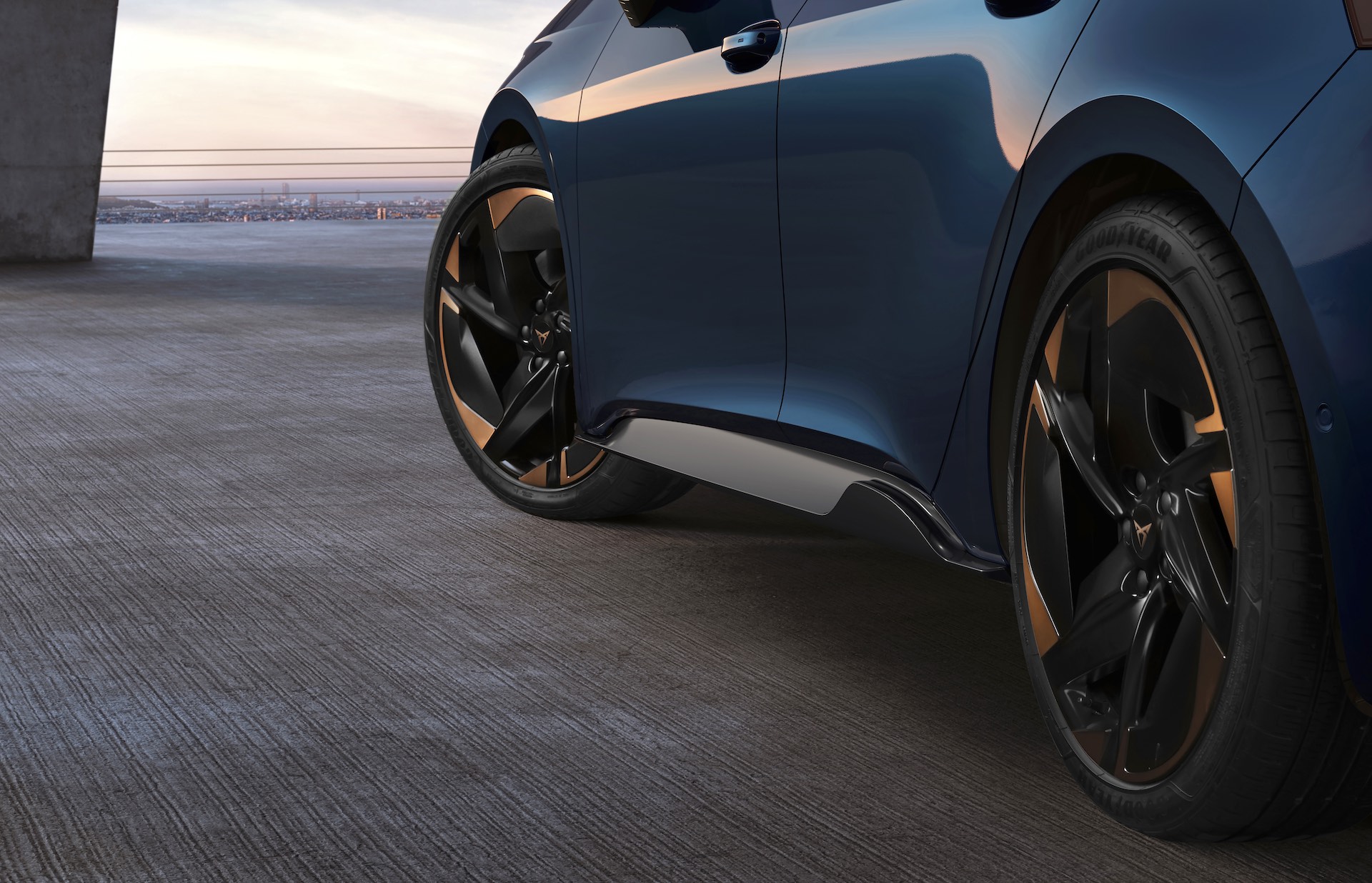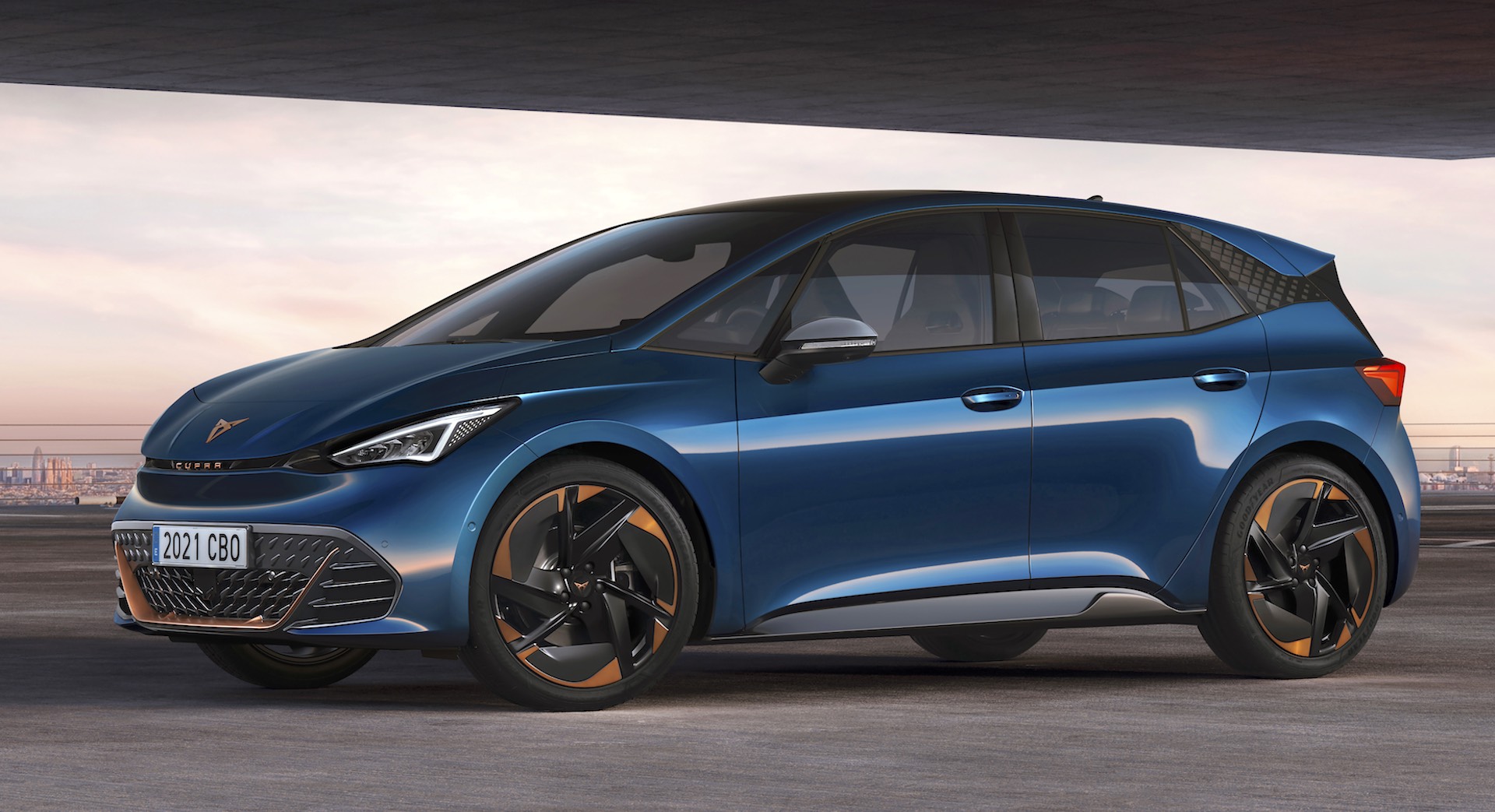Seat’s standalone sporty brand, Cupra, has revealed the full details of its first EV. Called Born, the electric hatchback is built on the same Volkswagen Group MEB platform found under the VW ID.3 hatch and the ID.4 and Audi Q4 e-tron SUVs.
In fact, it’s essentially a tweaked ID.3. But playing up to Cupra’s positioning as the everyman’s Lamborghini in the Volskwagen Group’s empire, the Born piles on the visual aggression and delivers more power than its VW cousin.
An Affordable EV With Attitude
The recent ID.3-based ID.X concept showed that it’s possible to dial in some more street presence to the ID.3 with a few modest upgrades. But right out of the box the Born looks much more dynamic.
If it looks familiar, and we don’t mean because you saw last week’s teaser, it’s probably because it’s almost identical to 2020’s El-Born concept. The basic body structure is shared with the ID.3, and unless we’re mistaken, even the doors are the same, though some clever visual trickery giving the impression of a fashionable floating C-pillar helps disguise the common DNA.
Related: Is The 2021 Cupra Leon 300 TSI The Best VW Golf GTI You Can Get?
The more important changes, though, happen at the front and rear ends. A sportier, sloping hood, more angular headlights and bigger (fake) lower grille give the Born a very different face to the ID.3. And the rear end is characterized by the horizontal light bar connecting the EV’s Cupra-specific triangular taillights and a supercar-style diffuser slung beneath the rear bumper.
Inside: Better Than The ID.3?
Much like the exterior of the Born, the inside borrows heavily from its opposite number at VW, but there are plenty of details changes to save it from looking like a carbon copy. The digital instrument pod gets its own graphics, the standard 12-inch infotainment system is a more traditional rectangular shape, and the dashboard and door panels are slightly re-profiled.
There’s also raised center console and a moodier use of dark colors and contrasting copper-look trim to give the whole cabin a defined performance vibe, while tech fans will appreciate the augmented reality head-up display available on higher trim grades.
Think the high-back bucket seats look pretty cool? They are, and not just because they ought to be able to keep you upright on a twisty Spanish mountain road. They’re actually upholstered in a fabric made from plastic extracted from seas and estuaries.
Power Outputs Range From Tepid to Warm, But Not Hot
Like the ID.3, the Born can only be configured with a single motor powering the rear axle. But there’s still plenty of variety when it comes to power outputs.
The base Born carries a small 45 kWh battery that’s good for 211 miles (340 km) of WLTP driving range, and its 148 hp output is enough to take it to 62 mph (100 km/h) in 8.9 seconds.
Slightly more in keeping with Cupra’s performance image, the next rung up the ladder brings a 58 kWh battery and 201 hp. That extends the driving range to 260 miles (418 km) and drops the 62 mph (100 km/h) time to 7.3 seconds. Go for the 228 hp e-boost motor option with with the same 58 kWh battery pack and you get an identical 260 miles of driving range, but 0-62 mph (0-100km/h) now takes 6.6 seconds. The e-boost features a push-to-pass button on the steering wheel that unlocks the extra performance.
Up To 335 Miles Of Driving Range
Finally, if you’re planning on covering long distances, or are simply too lazy to plug your Born in every night, you can mate the 228 hp e-boost motor with a bigger 77 kWh battery. That delivers a strong 335 miles of WLTP range – though not as strong as the 340 miles (547 km) of the leggiest ID.3 – but the added weight of the bigger battery pack knocks the 62 mph (100 km/h) time back to 7 seconds.
One advantage of choosing the biggest battery appears to be its faster charging rate. According to Cupra’s launch info only the 77 kWh model makes use of 125 kW charging, which can add 62 miles (100 km) of driving range in seven minutes, and fill the battery from 5-80 per cent in 35 minutes.
More Performance To Come?
As things stand, that’s as hot as the Born gets. But Cupra is renowned for its hot hatches, so we wouldn’t be surprised to see something a little hotter appearing in due course.
There’s no word on prices, which probably won’t be released until much closer to the start of left-hand drive production in September. Europe is obviously the Born’s key market, though a recent announcement that Australia will get Cupra products in 2022 could be great news for Aussie EV fans if the electric hatch also manages to get on the boat headed Down Under. Sadly for North America, there are no plans to bring the Born, Cupra or its ID.3 brother to the US or Canada.




